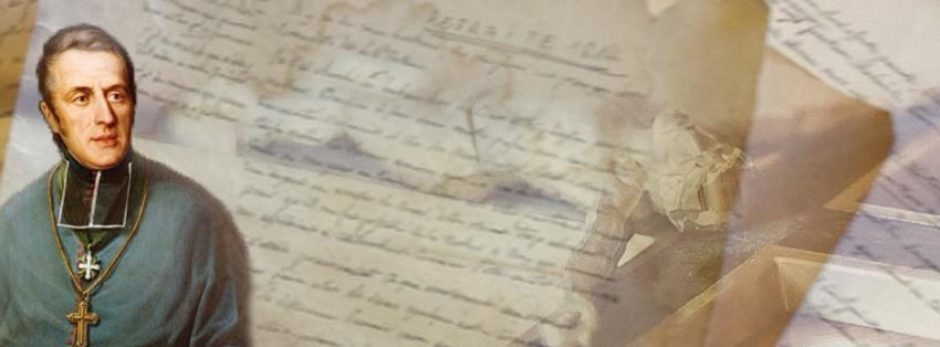Awareness of the religious situation of the orphans of Marseille became the awareness of God’s call to the service of a group that was abandoned. One of Eugene’s biographers gives us the background:
The Divine Providence Orphanage needed chaplains for the orphans whose religious, moral and vocational training was being provided on Lenche Place, in the residence formerly owned by the Requeti de Mirabeau family. On February 5, 1821, at a meeting of the Board of Directors, Father Dugas, who greatly admired Father de Mazenod, made a motion that the board appeal to the latter and his colleagues, since they had achieved such perfect results with the youngsters of Aix.
Leflon volume 2, page 180
Eugene’s reaction to the request:
My uncle informed me about the proposal of the Members of the Work of Providence. If I understood it well, these men would want to know if we could undertake the direction of the poor people that their charity has gathered together in the former property of M. Allemand.
That kind of ministry enters perfectly into our line of work; I was so convinced of that, that three years ago I took some steps to bring the poor of the city of Aix together and instruct them in their religious duties;
certain difficulties obliged me to put off that plan to another time. Now it is all done at Marseilles. If those Gentlemen think that we can second the holy work that they have undertaken, we are at their command.
Letter to Madame Roux, 3 January 1821, EO XIII n. 32
To the Archbishop of Aix, whose responsibility the vacant diocese of Marseille was, he wrote of the:
desire to have such an establishment of missionaries like ours in their city to which they would entrust the care of those members of their flock who are most abandoned. They have experienced the incalculable advantage of such an establishment, not only for the great many people of this great city, but also for all the sectors that they would successively evangelize, and that could thereafter be easily cared for.
Letter to the Archbishop of Aix, 12 January 1821, EO XIII n. 33
Today:
The call of Jesus Christ, heard within the Church through people’s need for salvation, draws us together as Missionary Oblates of Mary Immaculate.
CC&RR, Constitution 1
“While women weep, as they do now, I’ll fight; while children go hungry, as they do now I’ll fight; while men go to prison, in and out, in and out, as they do now, I’ll fight; while there is a drunkard left, while there is a poor lost girl upon the streets, while there remains one dark soul without the light of God, I’ll fight; I’ll fight to the very end!” General William Booth, Founder of the Salvation Army

“The call of Jesus Christ…” It begins with God’s call, with desires and yearnings initiated within us from God. Just there waiting to be recognized, heard, allowed to form and grow, given life. I hear it when I stop running and allow mysef to touch that silence and inner peace that we spoke of yesterday. It is a life-long journey, how shall I listen today, how will I allow God to speak to me today?
“… heard within the Church through people’s need for salvation…” Always it seems with Eugene there was God, and there was the Church, indelibly tied together. And although there was incredible struggle going on within the Church Eugene never gave up on it, but rather worked with and through it. The good and the bad, the ‘both and’, the joy and the pain. How can I quiet my own fears and struggles with some in my parish community and not allow them (my fears) to take over as they tug at me to let go of the ties to each other and the bigger picture of our Church? How can I rest in God and our Church today so that we both might grow?
“… draws us together as Missionary Oblates of Mary Immaculate. CC&RR, Constitution 1” What an inviting image, drawing us together, not being pushed or shoved, not being driven, not being coerced, but drawn together, into relationship with. The image is that of all of us in the Oblate family moving together, drawing strength and support, drawing life from and with each other. Leading and at the same time following each other. What we cannot do alone, but together it is all possible. I look at the changes to the very fabric of our societies that Eugene brought about, not on his own but with this family of Missionary Oblates of Mary Immaculate, How today will I let go of the “I” so that I will be free to move with the “we”?